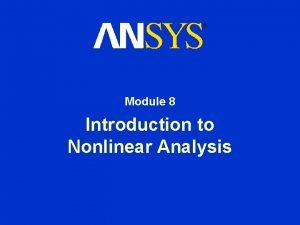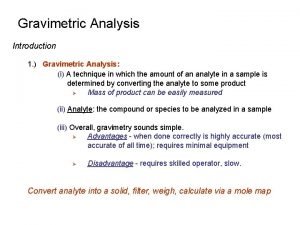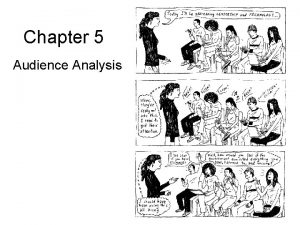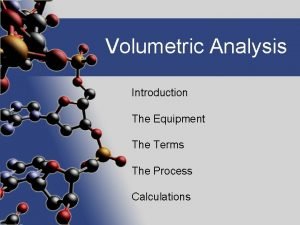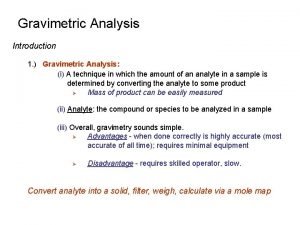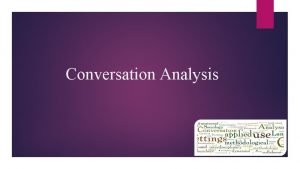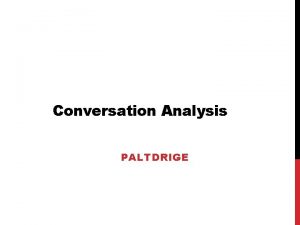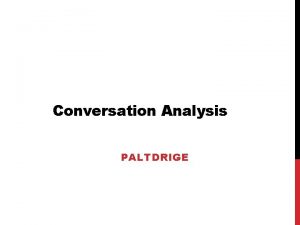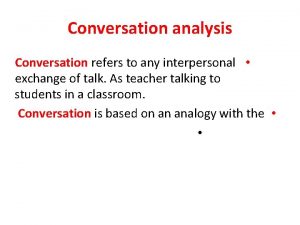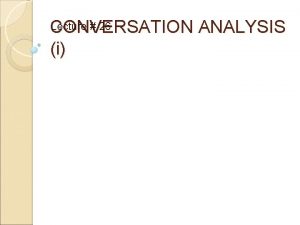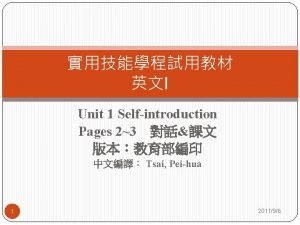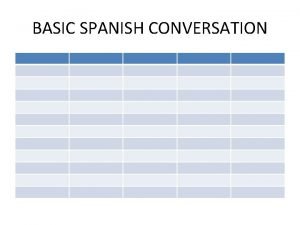Conversation Analysis Introduction to Conversation Analysis 2 e


















- Slides: 18

Conversation Analysis Introduction to Conversation Analysis 2 e Anthony J. Liddicoat, March 2011

The importance of conversation • Conversation is a central part of human life. – It is one of the most prevalent uses of human language. – It is the way in which people socialize and develop and sustain their relationships with each other. – It is an organised social activity which involves co-ordination across participants.

Core assumptions of CA • Orderliness of conversation – It is produced orderliness: • it does not exist prior to the conversation but is created through it. – Order is produced, situated and occasioned: • it is produced by the participants themsleves • participants orient to it and their behaviour reflects and indexes it. – Order is repeatable and recurrent: • It is repeated, not only in the talk of an individual speaker, but across groups of speakers.

Core assumptions of CA • Recipient design – Participants in talk design their talk in such a way as to be understood by an interlocutor, in terms of the knowledge that participants assume they share. – This means that conversational contributions are designed with a recipient in mind are designed as appropriate for that recipient. – Recipient design is therefore a form of orderliness.

Core assumptions of CA • Human talk is a form of social action: – Social actions are achieved through talk. – Talk is understood as action by participants in the interaction and they orient talk as action. – Talk is presented and understood as meaningful because participants share the same procedures for designing and interpreting talk.

Core assumptions of CA • Context – Context plays two primary roles in interaction. • Talk is context-shaped in that talk responds to the context in which it is created. – Talk is context renewing because talk shapes the context as each next bit of talk constrains and affects what follows and influences how further talk will be heard and understood. – Context can be considered in two different ways. • Context may be external to the interaction itself: social categories, social relationships and institutional and cultural settings. This form of context is less relevant for CA. • Context is created by participants through their talk.

Core assumptions of CA • Context – Context plays two primary roles in interaction. • Talk is context-shaped in that talk responds to the context in which it is created. – Talk is context renewing because talk shapes the context as each next bit of talk constrains and affects what follows and influences how further talk will be heard and understood. – Context can be considered in two different ways. • Context may be external to the interaction itself: social categories, social relationships and institutional and cultural settings. This form of context is less relevant for CA. • Context is created by participants through their talk.

Collecting data • Naturalistic data • The interactions being studied should be naturally occurring. – A naturally occurring interaction is any interaction that would occur regardless of whether it is being researched or not. • CA requires instances of interaction which were not designed for the purposes of research, but which were conducted by people for their own purposes.

Collecting data • Data for CA can be collected using: – Audio recordings • Audio recordings are inevitably incomplete as they present only the vocal elements of what is happening in the interaction. – Video recordings • Video captures gaze, body movement, the relationship of talk to the physical environment and the manipulation of objects. • It captures for the analyst more of what is available to the participants in understanding and designing the interaction. – Recordings capture information as it occurs and are not reliant of aspects of the interaction being noticed at the time.

Transcribing data • Once data is collected it needs to be transcribed. – Transcriptions are useful for presenting data in a form which can be more easily used for analysis. – Transcriptions are inevitably incomplete and are not the primary data, only a tool to aid analysis. – The process of transcription is a process of analysis of the data itself and involves choices and decisions about what is being represented.

Transcribing data • CA transcriptions are highly detailed because no information available in the interaction can be considered irrelevant to the interaction. • Most conversation analysts use a transcription system developed by Gail Jefferson and developed further over time.

Analysing data • CA treats every instance of interaction as a specimen of what people do in interacting. – Each interaction is a process and the ways in which it was achieved represent ways of creating order in interaction. – Collections of data with similar features allow further insights into how actions are achieved by speakers.

Analysing data • Unmotivated looking – The first step in analysing interaction is to identify what is happening in the interaction. – CA does not usually start with some object in mind when looking at the data but seeks to see what is there. – Unmotivated looking provides an entry point into analysis by providing opportunities to notice what is being done in a particular interaction.

Analysing data • One way of organising an examination of any piece of data is to identify: – the ways in which turn-taking operates – the sequences in the interaction and the ways they are structured and developed – instances of repair work dealing with interactional problems.

Analysing data • Making collections • Analyses are often based on collections of comparable data in which patterns of interaction can be observed. • Collections may be focus on: – a particular conversational action – a particular practice in talk

Analysing data • Collections are developed by working through a corpus of data in a systematic way to identify new instances of a phenomenon. – The selection aims to be as comprehensive as possible. – The resultant collection will show a range of variation in the ways the phenomenon under investigation is accomplished and this variation is an important analytic tool.

Analysing data • A starting point for analysis is to analyse a small set of the data in the collection to construct an initial analysis. • The analysis is developed further by examining more instances in the data. • new data may confirm the initial analysis • new data may require a change in the analysis • new data may show defects in the analysis • new data point to the need for different levels of generalisation in the analysis.

Analysing data • Deviant cases – Problematic examples of a phenomenon (deviant cases) are important in analysis. – Such cases ca be a mechanism for testing analyses. • Departures from established patterns of interaction are not treated as exceptions but as evidence for understanding the nature of the pattern. • Participants may display their understanding of the departure from a norm and the significance this has in interaction. • Departures may show that the orderliness that has been detected has a normative character.
 The expression of congratulation
The expression of congratulation Introduction conversation in english
Introduction conversation in english Telephone conversation by wole soyinka
Telephone conversation by wole soyinka What is insertion sequence in discourse analysis
What is insertion sequence in discourse analysis Essay structure introduction
Essay structure introduction Introduction of system analysis and design
Introduction of system analysis and design Introduction to nonlinear analysis
Introduction to nonlinear analysis Hunger games dandelion quote
Hunger games dandelion quote Billy collins introduction to poetry meaning
Billy collins introduction to poetry meaning An introduction to the analysis of algorithms
An introduction to the analysis of algorithms Gravimetric analysis
Gravimetric analysis Situational audience analysis definition
Situational audience analysis definition Introduction to factor analysis
Introduction to factor analysis Character review example
Character review example Apparatus for volumetric analysis
Apparatus for volumetric analysis Literary analysis introduction
Literary analysis introduction Speech analysis introduction
Speech analysis introduction Introduction of gravimetric analysis
Introduction of gravimetric analysis Fahrenheit 451 neil gaiman
Fahrenheit 451 neil gaiman






